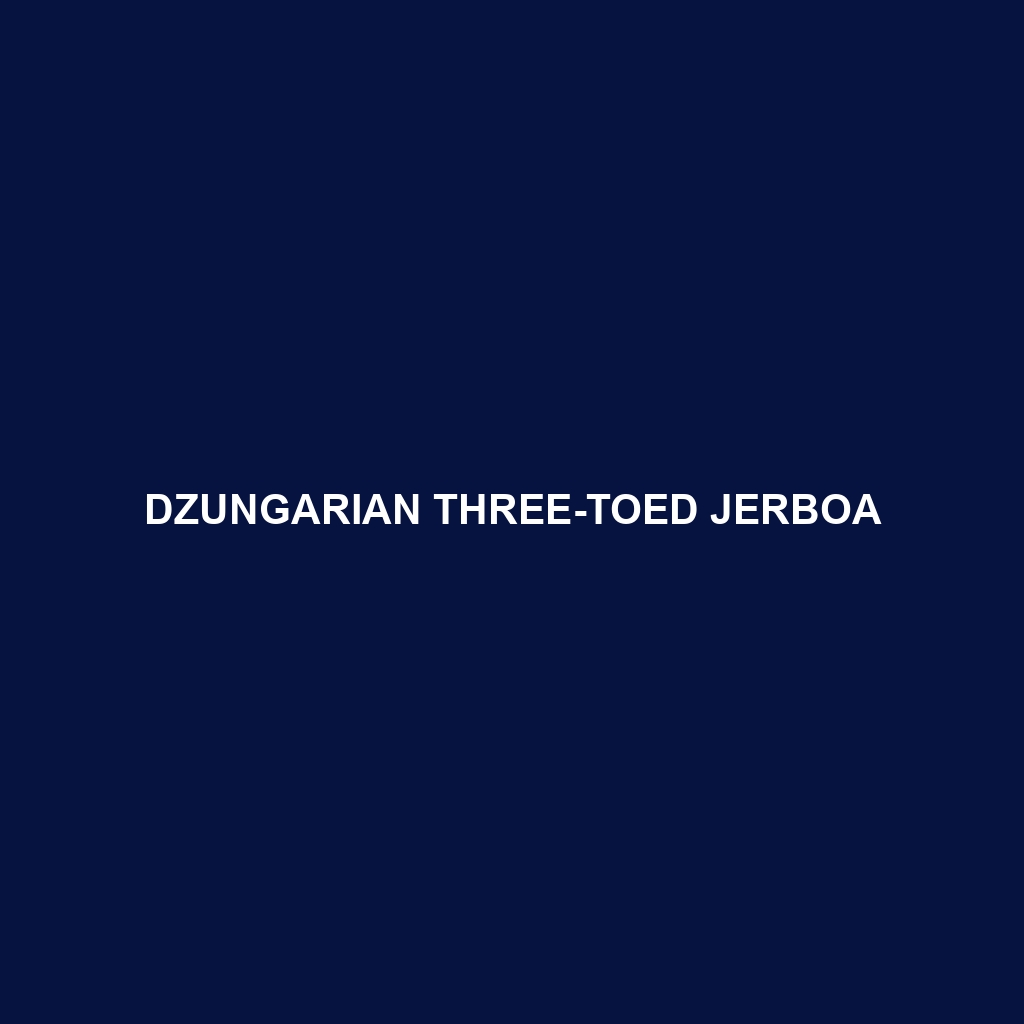Dzungarian Three-toed Jerboa
Common Name: Dzungarian Three-toed Jerboa
Scientific Name: Allactaga sibirica
Habitat
The Dzungarian Three-toed Jerboa is primarily found in the arid and semi-arid regions of Central Asia, particularly in Kazakhstan, Mongolia, and parts of northern China. This species thrives in sandy deserts, steppes, and grasslands, where it can exploit its burrowing abilities to escape extreme temperatures and predators.
Physical Characteristics
The Dzungarian Three-toed Jerboa is approximately 10 to 15 centimeters in length, with a tail that can be almost twice the body length. Its fur is typically a sandy or light brown color, providing excellent camouflage in its desert surroundings. Distinctive features include large hind feet adapted for leaping and small forelimbs which are used primarily for digging.
Behavior
This species is primarily nocturnal, engaging in most of its foraging and social activities at night. Dzungarian Three-toed Jerboas are known for their remarkable jumping ability, allowing them to escape from predators quickly. They exhibit social behavior by creating burrow systems that can be quite extensive, often shared with other individuals during harsher weather conditions.
Diet
Dzungarian Three-toed Jerboas are herbivorous, feeding primarily on seeds, leaves, and roots. Their diet is adapted to their desert habitat, where food sources can be scarce. They have developed efficient methods for storing and locating food, which are crucial for their survival in an environment with limited resources.
Reproduction
The breeding season for the Dzungarian Three-toed Jerboa typically occurs from late spring to early summer. Female jerboas can give birth to up to six offspring after a gestation period of about 25 days. The young are born blind and hairless but grow rapidly, becoming independent within a few weeks.
Conservation Status
The Dzungarian Three-toed Jerboa is currently listed as ‘Vulnerable’ on the IUCN Red List. Habitat loss due to agricultural expansion and climate change poses significant threats to its populations. Conservation efforts are needed to ensure the survival of this unique species.
Interesting Facts
The Dzungarian Three-toed Jerboa can leap up to 3 meters in a single bound, making it one of the most agile rodents. Its remarkable adaptation to desert life includes the ability to survive without drinking water, obtaining hydration from the food it consumes.
Role in Ecosystem
This species plays a vital role in its ecosystem by aerating the soil through its digging activities and serving as prey for larger predators. The Dzungarian Three-toed Jerboa helps maintain the balance within its desert habitat and contributes to seed dispersal, further promoting plant diversity in its environment.
